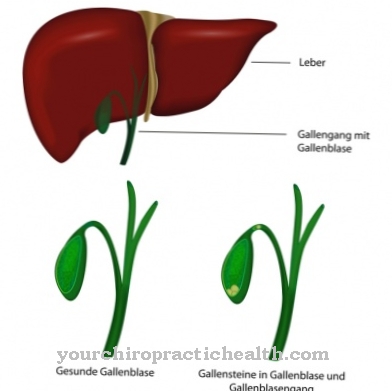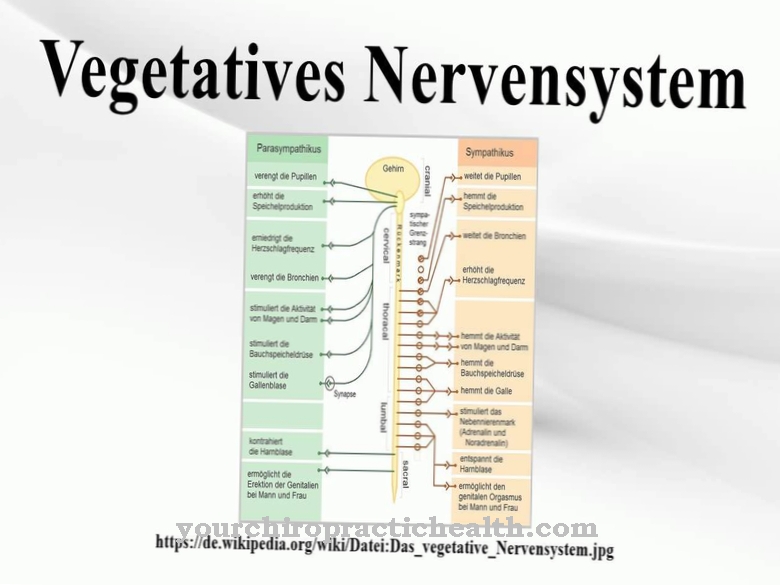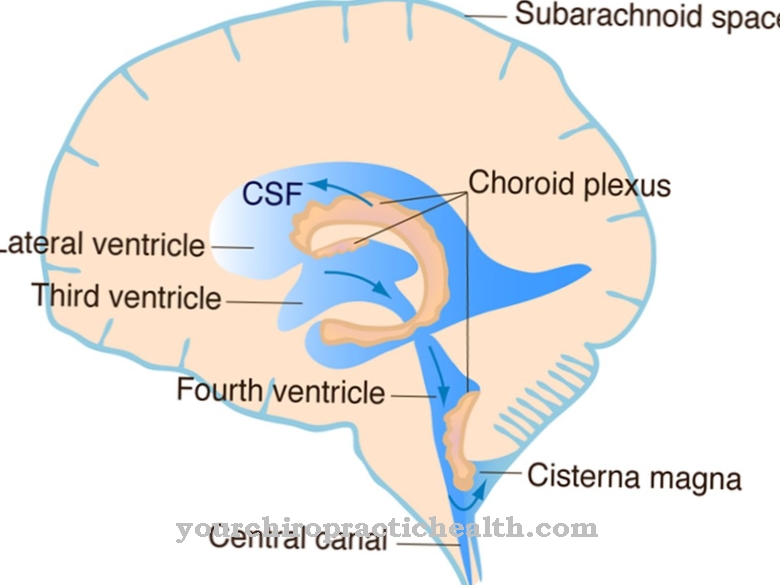The anatomical concept of Danie refers to the ring-shaped muscle strips along the middle large intestine and appendix, which give the intestine its segmented appearance and combine the bulges of the large intestinal wall into individual rows.
In the intestine, humans have a total of three tänien, which play a role in particular for the stability of the intestinal wall and the peristalsis of the large intestine. Like all other muscles in the body, tenias can be affected by the well-known muscle ailments, although this phenomenon is extremely rare.
What is the tänie?
A tänie is a longitudinal muscle reinforcement of the large intestine, such as is found in humans and some other mammals. Horses, pigs and rabbits as well as guinea pigs in particular are equipped with tänien in addition to humans. The reinforcements are in the shape of a string or a ribbon and lie on the longitudinal muscle layer of the colon wall.
Since they are somewhat shorter than the rest of the intestinal wall, parts of the intestinal wall sag on the sides of the tänien. The reinforcements give the large intestine its segmented appearance. Ultimately, the tänien summarize the bulges of the colon wall in individual rows. The number of these rows is therefore synonymous with the total number of individual tänien.
As a rule, humans have exactly three tänien in the large intestine. More precisely, these three tänien lie in the area of the colon, that is, in the middle large intestine. The rectal colon, on the other hand, is completely free of the reinforcements. Apart from the middle large intestine, tänien also occur in the appendix and are called Taeniae caeci there.In the large intestine, however, the doctor also calls the reinforcing bands Taeniae coli.
Anatomy & structure
Dania can be of various types and shapes. The so-called Taenia libera are freely visible and do not grow together with other parts of the inner intestinal wall. They are therefore also called free tänien. Taenia mesocolica, on the other hand, are fused with the mesocolon transversum, i.e. with the mesentery of the middle colon.
The Taenia omentalis, on the other hand, is networked with the greater omentum, i.e. with the peritoneum on the inner abdominal wall rich in fat The base of the smooth lining of the abdominal cavity partially covers the ring reinforcements. If one speaks of covered tänien, then one can also speak of Taenia obtecta in this case.
The doctor also calls the crescent-shaped ring folds of the large intestine Poschen or Haustren. They arise only through the presence of the reinforcement bands and, thanks to the tänien, are subdivided into so-called Poschenreihen. The house doors are not rigid structures. They are dynamic and constantly change their shape during digestive activity.
This movement is also known as segment peristaltic movement and is essential for digestion. Peristalsis consists partly of the intrinsic rhythm of the muscles, which enables the contents of the intestine to move. On the other hand, peristalsis also includes segmentations that allow the intestinal contents to be mixed.
Function & tasks
The large intestine is exposed to high pressure loads and forces. In order for it to be able to withstand these effects intact, it needs stability. Stabilization is therefore one of the most important tasks of the Danes. They keep the large intestinal wall architecturally stable and contribute to intestinal peristalsis, i.e. the muscle activity of the large intestine. This makes them irreplaceable for general digestion.
In addition, the Tänien take on the role of a middling point. The mesentery is the peritoneum fold, which serves as a hanging strap on an internal organ and thus connects the organs with the body wall. For the doctor, tänien also play an important role in appendectomy, i.e. a special appendectomy.
At the proximal end of the free tänien lies the appendix of the appendix, which must be removed during the appendectomy. The operating doctor finds the appendix to be removed all the more easily by following the steps during the procedure. In addition to the internal and functional tasks in the body, the external structure of the tänien thus has a key structural task in appendix operations.
Diseases
Symptoms and illnesses of the tänien are extremely rare, but can happen from time to time. If the tänien are injured or otherwise impaired in their function, the intestinal wall loses stability and the peristalsis of the intestine is endangered.
A functional impairment of the tänien can lead to complaints in the entire gastrointestinal tract, which result from digestive problems. Tänien are above all muscles. Like all other muscles in the body, they can be affected by typical muscle complaints. For example, any muscle in the body can be painful. In addition to tension, every muscle in the body can also be affected by injuries caused by overload.
Since the load on the tänien is automatic and cannot be triggered mechanically, an overload of the tänien hardly occurs, but in special cases it is still possible. Muscle inflammation can also occur and, because of their sheltered location, affect the tänien more often than symptoms of injury. The colon is also often affected by tumors. Malignant cancer of the muscles is known as soft tissue sarcoma and can possibly also affect the tänien. If a tumor spreads to other parts of the body, it can also affect all areas of the colon as a result.
Typical & common bowel diseases
- Crohn's disease (chronic bowel inflammation)
- Inflammation of the intestine (enteritis)
- Intestinal polyps
- Intestinal colic
- Diverticulum in the intestine (diverticulosis)
























.jpg)



